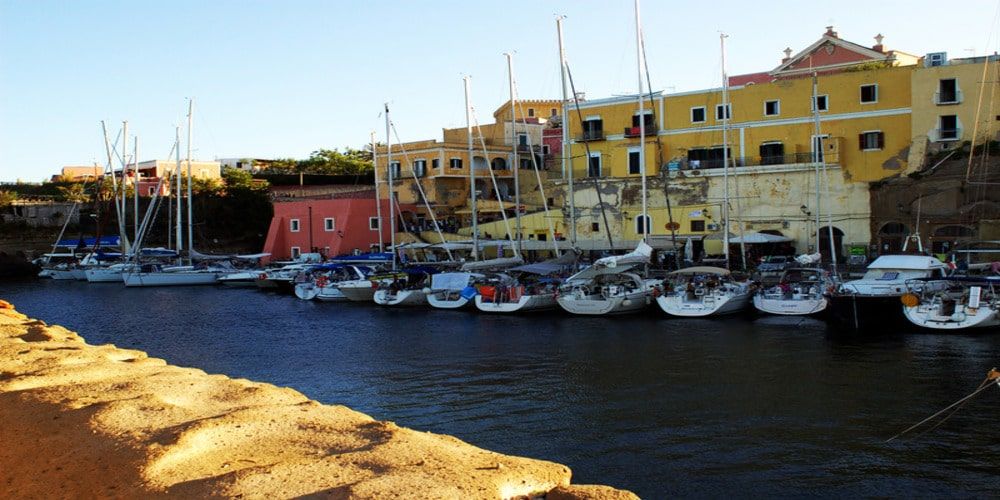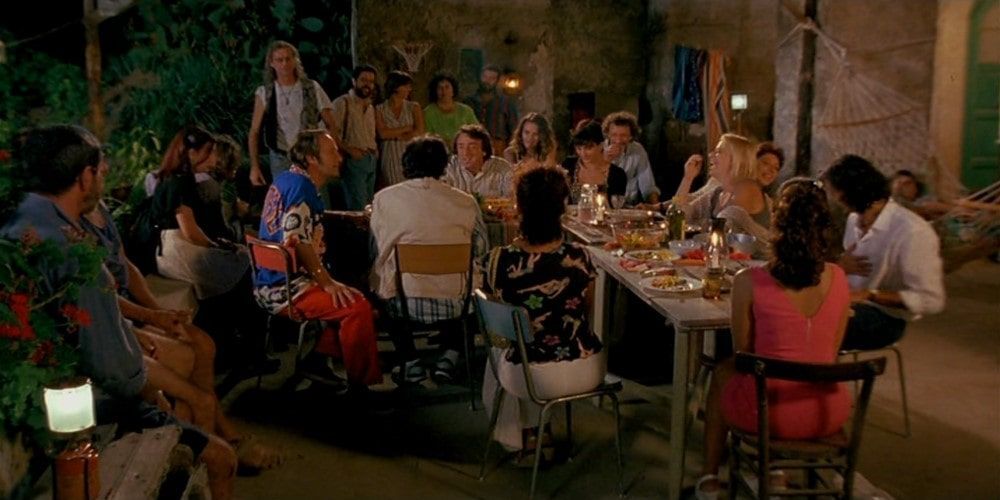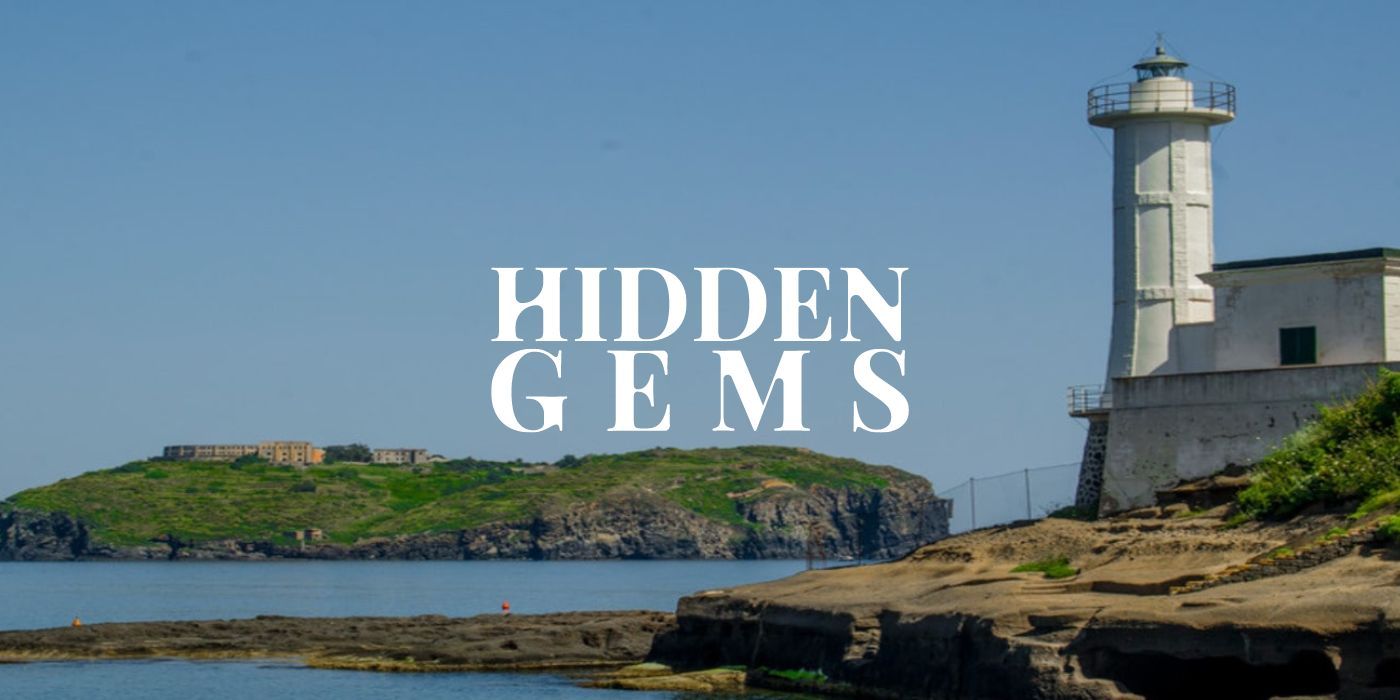When we think of the Ponzian Islands, off the Tyrrhenian Sea, we cannot but refer to Ponza, an island that calls for a certain type of tourism, in some ways more high-ranking and chic than that of other seaside resorts. A kind of tourism that nevertheless remains niche, where handfuls of regulars prefer to retreat to quiet, uncrowded places, where natural sights rather than nightclubs dominate.
A very similar philosophy, but with a possibly even more authentic spirit, reigns in Ventotene, one of Ponza's “little sisters”, which is often overshadowed by the latter, but can instead be an interesting destination for your next vacation.
Here we reveal what to do in Ventotene, what to see, what to taste and above all how to get there if you decide to choose it as your next destination for the summer.
Sail to Ponza from Rome
Ventotene: where it is and how to get there

Formerly known as Pandataria or Pandateria, Ventotene owes its current name to the fierce winds that continually blow across its territory. It is part of the Ponziano Islands along with Ponza, Palmarola, Zannone, Gavi and the nearby Santo Stefano and is located between Latium and Campania, but in the province of Latina. It is a small island of volcanic origin, geographically much more similar to its Neapolitan cousins, about 2 square kilometers in size, and home to a community of just 700 inhabitants.
We can say that the first advantage of Ventotene is therefore in its attainability, since it is little more than 50 km from the coast, and more precisely from Formia and Terracina regarding Latium, or from Ischia and Naples regarding Campania. From these cities it is possible to embark to reach the island by hydrofoil or ferry, thanks to the numerous companies that provide the service. Travel times are therefore quite rapid. Specifically, from Formia it will take about 2 hours by ferry and about an hour by hydrofoil; from Terracina the journey is a bit longer: 2 hours and 20. On the Campania side, by hydrofoil,it will take about an hour and 50 minutes from Naples and an hour and 55 minutes from Casamicciola, on the island of Ischia. From Ponza, of course, the journey is even shorter: 45 minutes.
Now that you know how to get there, let's look in detail at what to do in Ventotene for your next stay.
Discover all Ischia's wondersExploring the sea and relaxing on the beach
Ventotene's main feature is its quiet and relaxed mood, which has always made it the haven of safety or even the second home of many people, from families with children to groups of over-60 friends, in other words, by all those who seek relax and close contact with nature and avoid the chaos of nightclubs and the massive assault on the beaches.
On the island, actually, nature is at its best, starting with the rocky-bottomed crystal-clear sea, which gave it the Blue Flag and in which it is possible to dive and discover its wonders. The most interesting spot for diving is Punta Eolo, located to the north of the island: at a depth of about fifty meters, amidst the colors of the underwater flora and fauna, you will come across the remains of boats from the Roman era and especially the wreck of the steamship Santa Lucia, which was shot down by the British Air Force during World War II and which today represents a fascinating historical evidence but also a symbol of the island, as disturbing as it is fascinating.
Another priceless treasure of Ventotene are the stunning beaches, both sandy and rocky; the most famous are Cala Nave - from which it is possible to admire the legendary lighthouse, the two stacks (Nave di Terra and Nave di Fuori), the so-called Scoglietello, and the island of S. Stefano - and Cala Rossano, partly occupied by the port. It is also full of small bays, coves, and inlets for those who want some privacy, such as Cala Battaglia, Punta Pascone, Sconciglieche, and the aforementioned Punta Eolo, which can be reached only by small boats.
Also, don't forget the pit stop at Parata grande beach, the best spot to admire from afar the islands of Ponza and Zannone and the wonderful sunsets overlooking the sea.
Framing the scene is the very rich local flora, such as Indian figs, brooms, holm oaks, helichrysums, dwarf palms, lentils, a symbol of local cuisine, and Pandataria grapevines, from which the wine of the same name is made
Admiring archaeological sites from the Roman era
Ventotene boasts a very ancient history, whose phases are evidenced by numerous artifacts; thanks to its advantageous position so close to the land it became an important outpost and docking port of the Romans, and that is why many of the wonders you will be able to admire tell important pieces of the greatest civilization of the ancient world.
Today you can visit, for example, the cisterns made of cocciopesto, a very durable and impermeable material, designed to collect rainwater, which were essential to compensate for the lack of freshwater sources; the most famous is certainly that of the Carcerati, inside which there are several graffiti and engravings that date back, however, to several centuries later, when the island became a prisoner's dwelling in the Bourbon era.
Not far from the harbor and lighthouse, there is also the fishpond for the breeding of different species of fish for the Roman noblemen's tables. It consists of three tuff tanks built with state-of-the-art techniques, which allowed constant water exchange but not the escape of the animal.
Finally, on the promontory of Punta Eolo, overlooking the waters, are the remains of an ancient residence from the Augustan period, the famous Villa Giulia. This is a huge palace dedicated to otium (chilling), a summer residence for Emperor Augustus and his court but which later became a home for exiles; the emperor's daughter, after whom the villa is named, was one of the most famous guests and spent five years there because she was exiled for adultery. The building consisted of a central body, a discreetly preserved bathhouse, a courtyard with garden, a riding stables and a part for slave quarters. Villa Giulia has naturally suffered from the weather and saltiness but unfortunately it went through theft as well, especially in the seventeenth century; despite this, a good part of the complex, including some frescoes, are still in fair condition and therefore can be visited.
Other artifacts from the Roman and non-Roman periods can be visited at the local Archaeological Museum.
Discover the archaeological sites of Ponza as wellStaying with your nose in the air at the Balloon Festival
Life in Ventotene, as already mentioned, flows quietly and does not include any festivals or parties, but those who know this place are well aware that the flagship event, which symbolically closes the summer season, is the feast of St. Candida, to whom the main church in the village is dedicated. It is a fairly long festival, which begins on September 20, lasts 10 days and includes several happenings.
The conclusion includes the ritual procession and, above all, the highly appreciated hot air balloon competition, artifacts made from colored paper by the citizens. Finally, not to be missed is the unfailing fireworks display overlooking the sea, beloved by young and old alike.
Visit Santo Stefano: the Reserve and the Borboun Jail
Almost like a rib of Ventotene, Santo Stefano represents an ideal territorial extension of it, which is why three things to do on the island we cannot fail to mention for a visit.
The first attraction not to be missed is certainly the Protected Reserve, which since 1997 embraces the environments of both islands and aims to protect and enhance the ecosystem of the coasts and seabed, preserving the fauna and flora, and proposing educational and popular initiatives. Within the reserve, it is possible to visit surface and deep caves and visually striking vegetation, such as Posidonia meadows, bright orange Madrepores, yellow and red gorgonians, and beautiful sea daisies; the animal species that can be encountered are even more numerous and interesting - mullet, tracine, moray eels, octopus, turbot, amberjack, but especially small whales, Caretta Caretta turtles, and dolphins. There are also numerous bird species, including barn owls and peregrine falcons, which will delight birdwatchers.
The other key stop in Santo Stefano is the Bourbon prison, built in the 18th century by order of King Ferdinand IV. A horseshoe-shaped structure complete with surveillance tower, still excellently preserved, it housed exclusively lifers. During the Ventennio (the twenty years of Fascism) it was converted into a confinement site, where exiles were sent-the most famous was former president Sandro Pertini, from 1929 to 1930-almost as an ideal continuation of its function during the Roman Empire.
What to eat in Ventotene
What to do in Ventotene, of course, includes sitting down at the table to enjoy the typical food specialties. It is an interesting mix between the Campania and Latium cuisines, but with its own notable dishes; among these you will find the moray eel in scapece, prepared in chunks and cooked together with pink onions, a highly requested local delicacy, bay leaves and pine nuts, or the cianfotta, a vegetable and legume soup in which wild asparagus dominates; and finally the famous lentil soup with octopus, where the flavors of sea and land meet in a strange combination.
Lentils themselves, Ventotene's most representative product, are found in a number of dishes but are available in limited quantities, so efforts are made to use them sparingly and grow them with extreme care
What to do in Ventotene to experience its essence

As you may have guessed, Ventotene is a real hidden gem, a place unjustly little known but absolutely worth a visit for all the wonders it holds.
The authentic essence of Ventotene, made of history and wilderness, makes it perfect for old-fashioned, spartan, unpretentious vacations dedicated to exploration and discovery. This out-of-time mood, in which the hands of the clock seem to run slower, even made director Paolo Virzì fall in love with it, who shot Ferie d'agosto there in 1996, one of the most famous Italian films dedicated to the summer, and returned there for the sequel, Un altro ferragosto, in 2023, a bit like the people who love this place do every summer.
If you love to be in contact with the sea and experience the beach until the sun sets book your next ferry now for a truly restorative vacation on the windy island.
About the author
Written on 28/05/2024




Denise Penna
Less famous than Ponza, away from the summer tourist circuit and definitely wilder: find out what to do in Ventotene for your next vacation